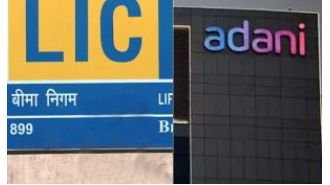Financing Options: Convertible Debt
MBA Mondays are back after a one week hiatus. Today we are going to talk about convertible debt. Convertible debt can also be called convertible loans or convertible notes. For the purposes of this post, these three terms will be interchangeable.
Convertible debt is when a company borrows money from an investor or a group of investors and the intention of both the investors and the company is to convert the debt to equity at some later date. Typically the way the debt will be converted into equity is specified at the time the loan is made. Sometimes there is compensation in the form of a discount or a warrant. Other times there is not. Sometimes there is a cap on the valuation at which the debt will convert. Other times there is not.
There are a number of reasons why the investors and/or the company would prefer to issue debt instead of equity and convert the debt to equity at a later date. For the company, the reasons are clearer. If the company believes its equity will be worth more at a later date, then it will dilute less by issuing debt and converting it later. It is also true that the transaction costs, mostly legal fees, are usually less when issuing debt vs equity.
For investors, the preference for debt vs equity is less clear. Sometimes investors are so eager to get the opportunity to invest in a company that they will put their money into a convertible note and let the next round investors set the price. They believe that if they insisted on setting a price now, the company would simply not take their money. Sometimes investors believe that the compensation, in the form of a warrant or a discount, is sufficiently valuable that it offsets the value of taking debt vs equity. Finally, debt is senior to equity in a liquidation so there is some additional security in taking a debt position in a company vs an equity position. For early stage startups, however, this is not particularly valuable. If a startup fails, there is often little or no liquidation value.
Friends and family rounds, which we discussed earlier in this series, are often done via convertible debt. It makes sense that friends and family would not want to enter into a hardball negotiation with a founder and would prefer to let the price discussion happen when professional investors enter the equation.
The typical forms of compensation for making a convertible loan are warrants or a discount.
Warrants are another form of an option. They are very similar to options. In the typical convertible note, the Warrant will be an option for whatever security is sold in the next round. The Warrant is most often expressed in terms of "warrant coverage percentage." For example "20% warrant coverage" means you take the size of the convertible note, say $1mm, multiply it by 20%, which gets you to $200,000, and the Warrant will be for $200,000 of additional securities in the next round. Just to complete this example, let's say the next round is for $4mm. Then the total size of the next round will be $5.2mm ($4mm of new money plus $1mm of the convertible note plus a Warrant for another $200k). The total cost of the convertible loan is $1.2mm of dilution at the next round price for $1mm of cash.
A discount is simpler to understand but often more complicated to execute. A discount will also be expressed in terms of a percentage. The most common discounts are 20% and 25%. The discount is the amount of reduction in price the convertible loan holders will get when they convert in the next round. Let's use the same example as before and use a 20% discount. The company raised $4mm of new cash and the convertible loan holders will get $1.25mm of equity in the round for converting their $1mm loan ($1mm divided by .8 equals $1.25mm). Said another way $1mm is a 20% discount to $1.25mm.
Convertible notes also typically have some cap on the valuation they can convert at. That cap is anywhere from the current valuation (not very common) to a multiple of the current valuation. Recently we are starting to see uncapped convertible notes. These notes have no cap on the valuation they can convert at.
Startups typically think about raising capital via convertible debt early on in the life of a startup. They want to move fast, keep transaction costs low, and they are often dealing with a syndicate of angel investors and it is easier to get the round done with a convertible note than a seed or series A round. While these are all good reasons to consider convertible debt, I am not a big fan of it at this stage in a company's life. I believe it is good practice to set the value of the equity early on and start the process of increasing it round after round after round. I also do not like to purchase or own convertible debt myself. I want to know how much of a company I've purchased and I do not like taking equity risk and getting debt returns.
However, later on in a company's life convertible debt can make a lot of sense. A few years ago, we had a portfolio company that was planning on an exit in a year to two years and needed one last round of financing to get there. They went out and talked to VCs and figured out how much dilution they would take for a $7mm to $10mm raise. Then they went to Silicon Valley Bank and talked to the venture debt group. In the end, they raised something like $7.5mm of venture debt, issued SVB some Warrants as compensation for making the loan, and built the company for another year, sold it and did much better in the end because they avoided the dilution of the last round. This is an example of where convertible debt is really useful in the financing plan of a startup.
My guess is we will see the use of convertible debt, particularly with no compensation and no cap on valuation, wane as the current financing gold rush fizzles out. It will remain an important but less common form of early stage startup financing and will be particularly valuable in things like friends and family rounds where all parties want to defer the price negotiation. But I expect that we will see it used more commonly as companies grow and develop more sophisticated financing needs. It is a good structure when the compensation for making the loan is fair and balanced and when the debt vs equity tradeoff is useful for both the borrower and lender.







